Candi Borobudur & Candi Prambanan
Candi Borobudur
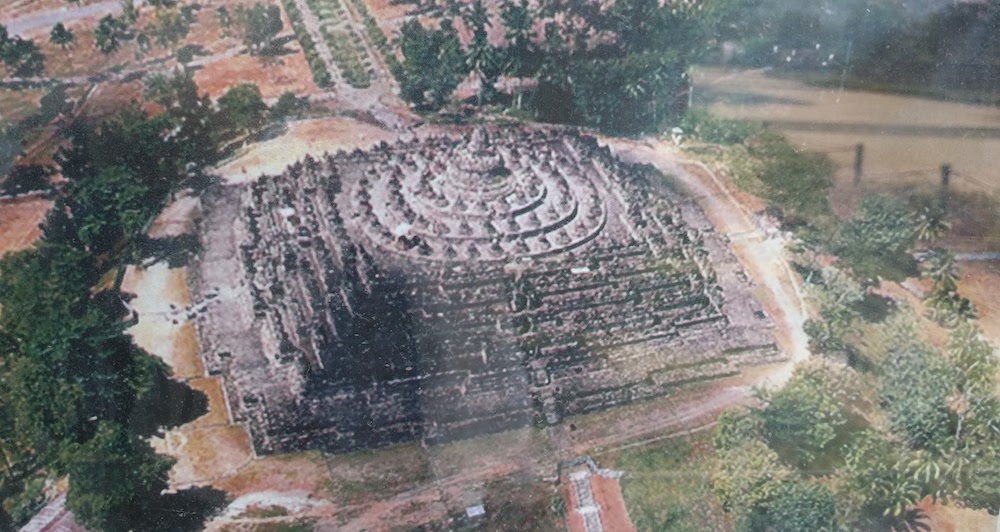 Aerial shot of Borobudur
Aerial shot of Borobudur
On our 3rd day in Borobudur we visited the temple (Candi), which is why the town exists. The temple has a fascinating history and is the largest Buddhist temple in the world, despite being located for many centuries in a region that is predominantly Muslim with virtually no Buddhists. At the time of its construction in the 9th century, Buddhists and Hindus were coexisting in central Java with some degree of harmony. (Candi Prambanan, we visited on the next day, is largest Hindu temple in Indonesia, built around the same time and only 50 km away). When a volcano erupts, the Javanese have the custom to pack up and pick a different place to live (seems like common sense); this happened in the 10th century so they abandoned Borobudur and Prambanan (both covered in volcanic ash and toppled) and settled mostly in Eastern Java to build new temples and start over. In the 19th century both sites were “rediscovered”, thus gaining international attention.
 Stonework at Borobudur
Stonework at Borobudur
Borobudur temple, has 9 levels, constructed like a step pyramid. These levels are broken into sections representing realms of Buddhist cosmology, and 1,460 relief sections surrounding the levels tell stories of the stages of the Buddha’s spiritual development to enlightenment. Aside from the reliefs, the temple has 504 life-size statues of Buddha geometrically arranged, and those on top veiled in stupas. Truly an impressive sight, and difficult to capture with my camera. Much work has been done to restore the structure, and the reliefs and other stonework have retained a lot of detail over a millennia.
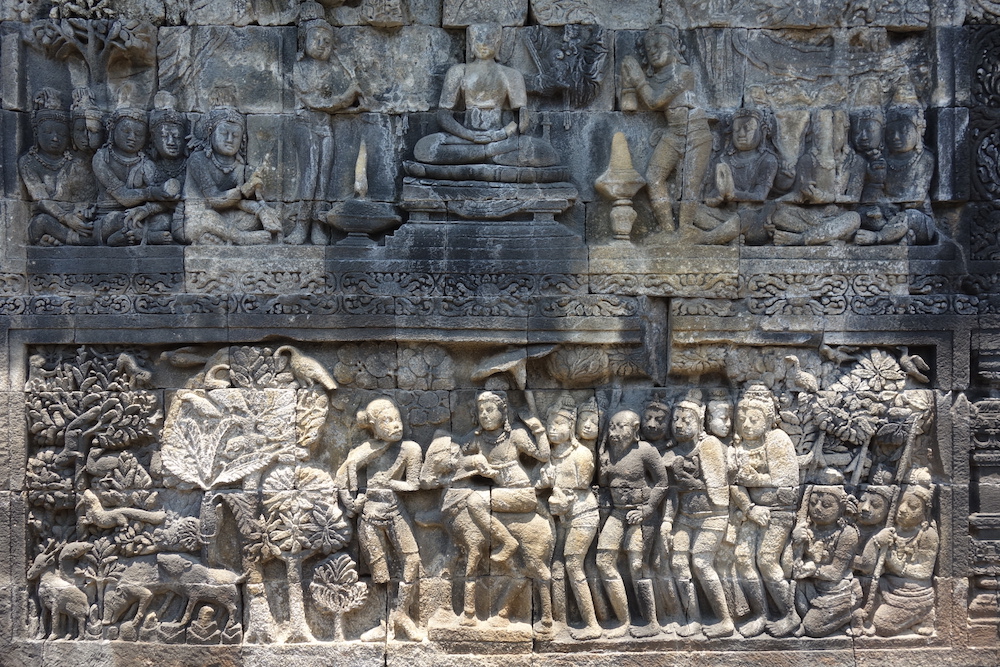 Example of relief at Borobudur
Example of relief at Borobudur
As the morning grew late, the sun was more intense and the tourists and visitors packed in tighter. In spite of its Buddhist symbolism, Borobudur is a revered as a source of pride for all Indonesians. We saw many Indonesians school groups flood the area.
Candi Prambanan
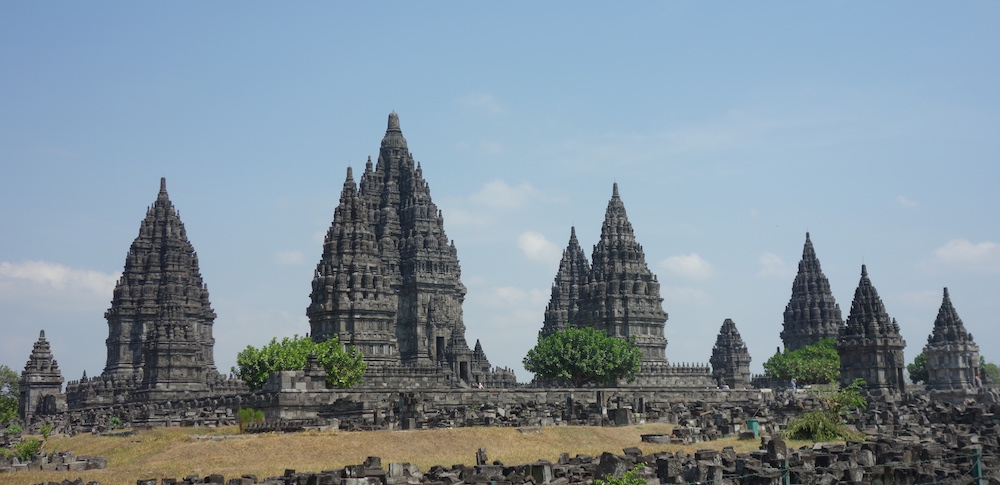 Entrance to Candi Prambanan
Entrance to Candi Prambanan
Prambanan temple was our stop on the next day, on our way to our next guest house in Yogyakarta. The biggest Hindu temple in Indonesia, Prambanan was also quite impressive. In contrast to the singular structure of Borobudur (and it’s “non-theistic” Buddhist values), Prambanan is a temple compound of several related temples, mainly to the principal Hindu gods, Shiva (destroyer), Brahma (creator) and Vishnu (preserver). Inside each temple was one or more cave-like rooms, each with a statue inside representing the god or lesser gods in relation. The complex of temples is meant to represent the layers of Hindu cosmology.
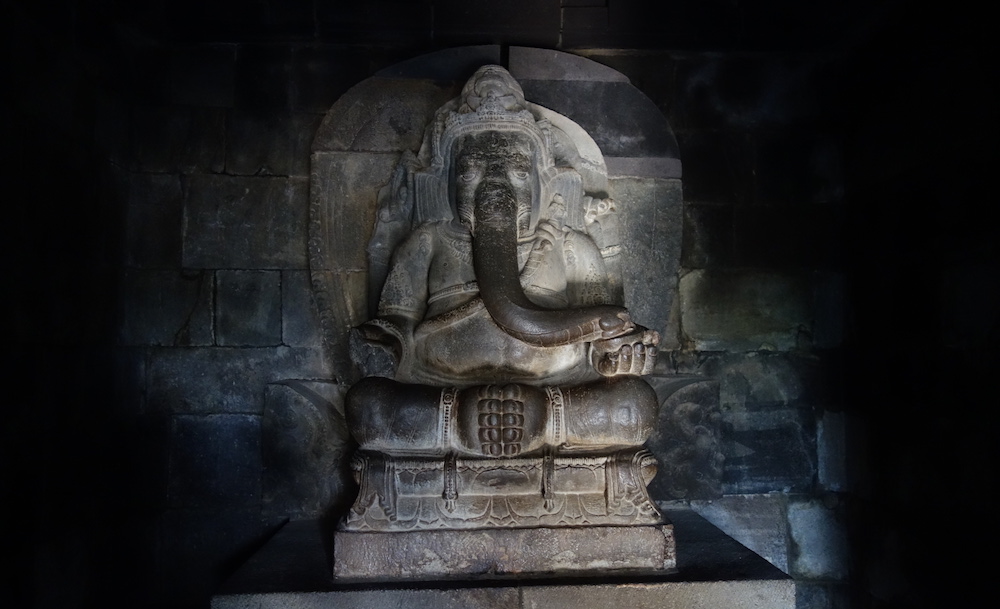 Prambanan chamber Ganesha statue
Prambanan chamber Ganesha statue
While based on different fundamental ideas, there seemed to be many similarities to Borobudur temple. There were reliefs around each temple, collectively telling the story of Ramayana especially important in Indonesia and throughout Southeast Asia. Shapes and stone carving styles seemed quite similar as well. I enjoyed just examining the details and textures of the carvings.
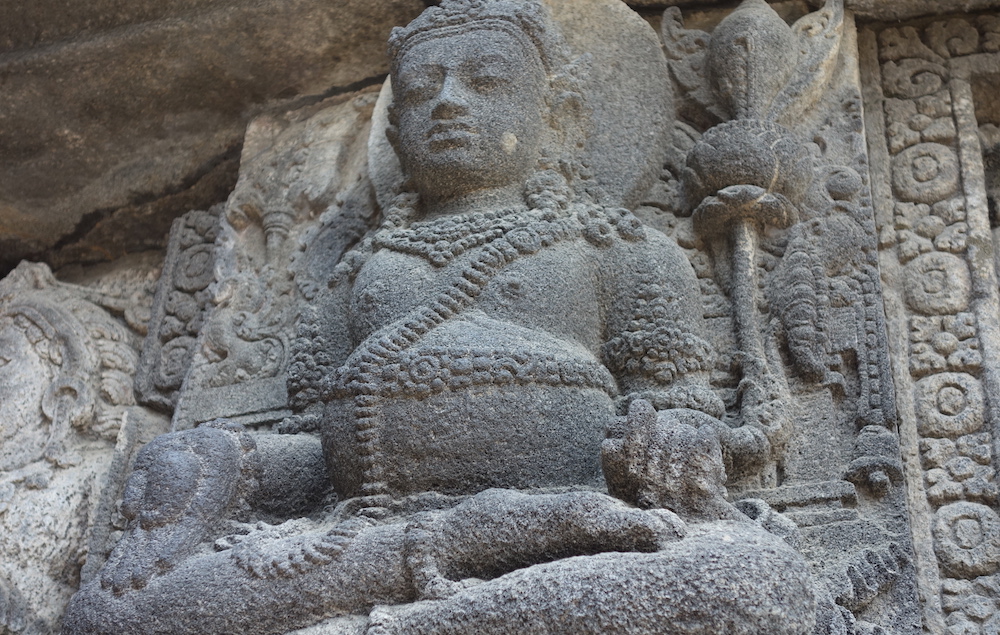 Stonework at Prambanan
Stonework at Prambanan